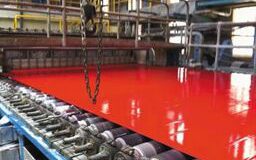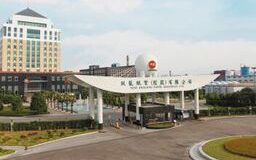Business Cycles – Questions Executives Need to Ask
KATIE MENCKE
Because many factors impact its multiple segments, the pulp and paper (P&P) industry is complex. As in other industries, P&P business leaders must rely on their ability to understand and respond to the industry’s cyclical nature and long-term trends. However, the capital-intense nature of the P&P industry turns every decision into a business imperative. How well a business leader can predict the next business cycle has long-term effects on profitability, shareholder value, and business longevity. But how can business leaders predict the ups and downs in a reliable way?

Successful businesses do not depend on guesswork. They leverage robust business intelligence based on an understanding of factors that have impacted historical performance, and then use that knowledge to predict how their segments will behave in the future.
BUSINESS CYCLES DE-MYSTIFIED
Business cycles can be short-term or longer-term and are driven by factors including supply, demand, and industry behavior.
Short cycles in the paper industry are typically annual in frequency and are marked by month-to-month changes, such as seasonality caused by factors like growing season and customer ordering periodicity. These types of cycles do not serve as indicators of the direction the industry is headed as a whole, but they are important considerations for companies struggling with cash flow. Figure 1, for instance, could be used to help a company predict cash flow needs over the course of a year. The typical amplitude of tissue price shown over the last 10 years is about US$85/FST, reflecting an average 5 percent price fluctuation over the year. On 27 occasions, however, year-over-year price has dropped more than 5 percent. As an executive, I would be prepared for a 5 percent price fluctuation in my cash flow outlook and have a reserve supplement cash flow should the drop be larger than expected.

Medium-term cycles in the P&P industry are typically three to five years long and are driven by slower responses to industry trends such as inventory build-ups and draw-downs, and capacity changes. These types of cycles can be pivotal to answering questions including:
• How will industry capacity respond to demand cycles?
• When should I plan my new capacity to come online?
• How can I maximize the profitability of my new investment?
The capital required for capacity investment and planning requires long lead times for approval and implementation. A company can better anticipate market conditions at the time of a project start-up by looking at how the market has behaved in the past.
Figure 2 illustrates how capacity addition is usually a reaction to recent high prices. However, I would argue that capacity that comes online slightly before the top of the cycle could be better off and have an easier time ramping up to full capacity while demand and price are on the upswing.

Of course supply, demand, and price are all interrelated; but how they are interrelated is unique to each segment. Fisher and STE Analytics have partnered to use systems dynamics modelling as a way to predict future cycles. This way of modelling uses stocks and flows to characterize industry behavior with regard to supply, demand and price (Fig. 3). This complex industry behavior can be described as a series of feedback loops that can be turned into a model to forecast prices based on observed industry behavior.
But all models must be based on reliable data to build meaningful predictions, such as those that are derived through FisherSolve Next™. This type of accurate forecasting:
• Accurately predicts turning points in price cycles many months out;
• Explains the “why” of price movements in ways industry professionals find useful;
• Allows for sensitivity analysis on key influences and “what-if?” testing of strategic plans.
LONG-TERM IMPACT ON INDUSTRY STRUCTURE
Short and medium cycles are not the only factors business leaders must consider when looking to maximize their strategic planning. They must also consider changes that have come as a result of structural trends, and the questions raised about the future impact of these trends on various segments in the pulp and paper industry.
One clear example is expanding anti-plastics legislation. In 2018, the UN estimated that worldwide, more than150 policies have been issued concerning a levy or ban on certain types of single-use plastic, either on a national or local basis. Some businesses are responding to public sentiment even in the absence of legislation in order to position themselves more favorably. This growing trend is expected to have huge ramifications in the pulp and paper industry, as companies seek innovative ways to take advantage of it. This trend raises critical questions:
• Which types of substrates will benefit?
• What impact will that have on both producers and suppliers?
• Which companies are leading the trend?
• When is the best time to capitalize on these changes to realize maximum profitability?
By understanding the year-on-year trends of annual plastic waste being generated across various segments, P&P industry business owners can determine the potential for substitution and whether those volumes are large enough to justify a change in their production focus. Figure 4 illustrates that about 1 percent of plastic waste substitution could result in roughly 1 percent paper volume increase; that’s equivalent to 3.1 million tpy, or about 10 paper machines (depending on size).

Another example of trending legislation is a restriction on cement sack weight, particularly in Latin American countries. Considering most cement in developing countries is delivered in sacks as opposed to bulk trucks, reducing sack weight from 50kg to 25kg will require about 1.5 times more sack paper to meet the current cement demand. The relative importance of Latin America as a sack paper-consuming region will grow to reflect this change.
A third structural trend is the change in Chinese imports of recovered paper given recent government restrictions. How low will these numbers go? Who will be most affected by the continued ban? What are the long-term ramifications to paper producers in China?
Because these types of drivers can influence structural change at differing rates (since they are dependent upon external variables), no cookie cutter recipe dictates a “normal” cycle. This is precisely why business owners must understand their impact.
Both business cycles and structural change drivers can be predicted and used for advantage in business. Knowing the right questions to ask and applying sound business intelligence and insights can help business owners align their forward-thinking strategies to maximize success.
Katie Mencke is senior consultant, Fisher International. With deep expertise in the pulp and paper industry, Fisher can arm companies with knowledge that will help them understand their strengths and weaknesses, stave off challenges, and better position themselves for long-term growth. Visit www.fisheri.com or email info@fisheri.com.




